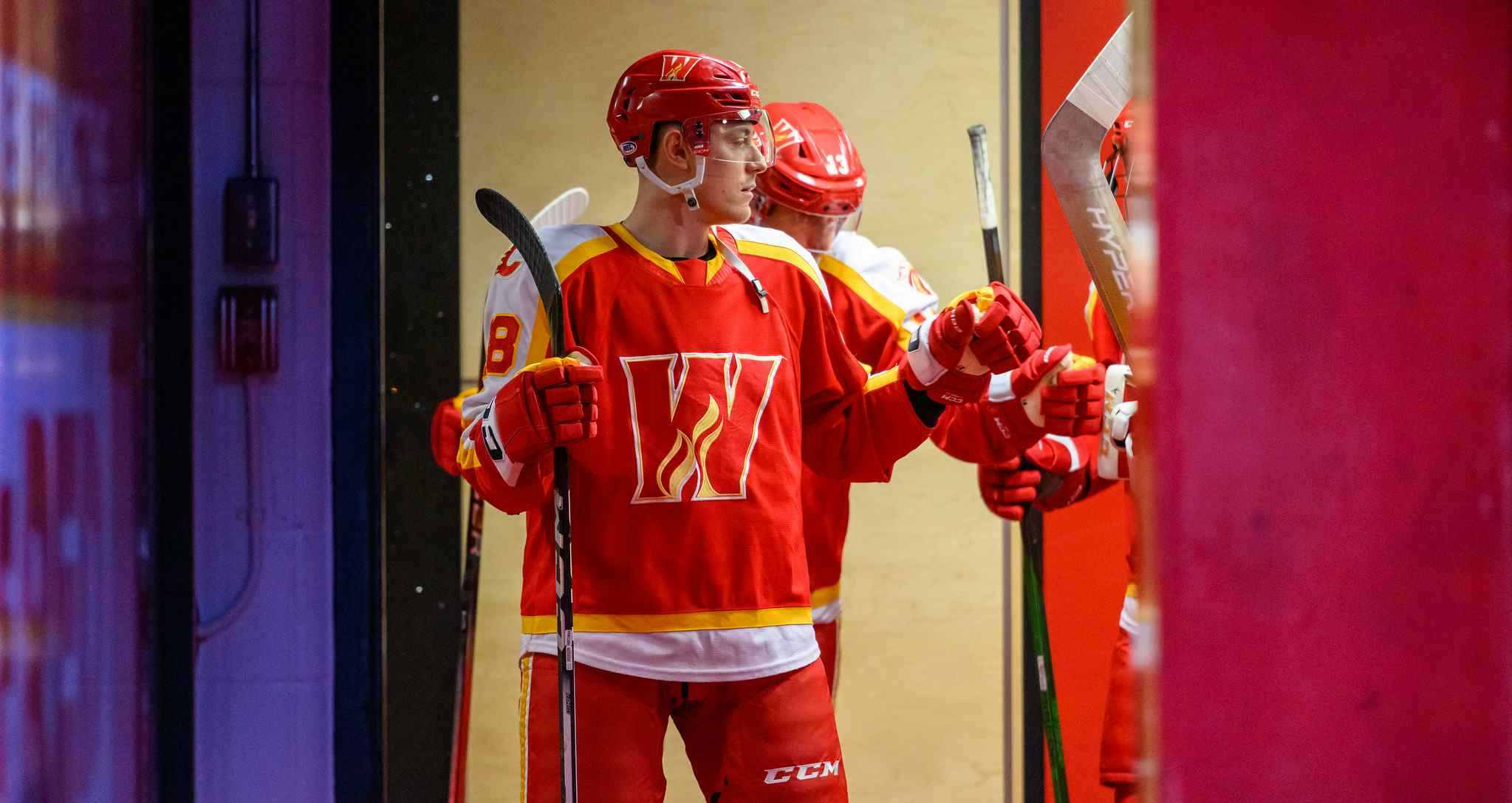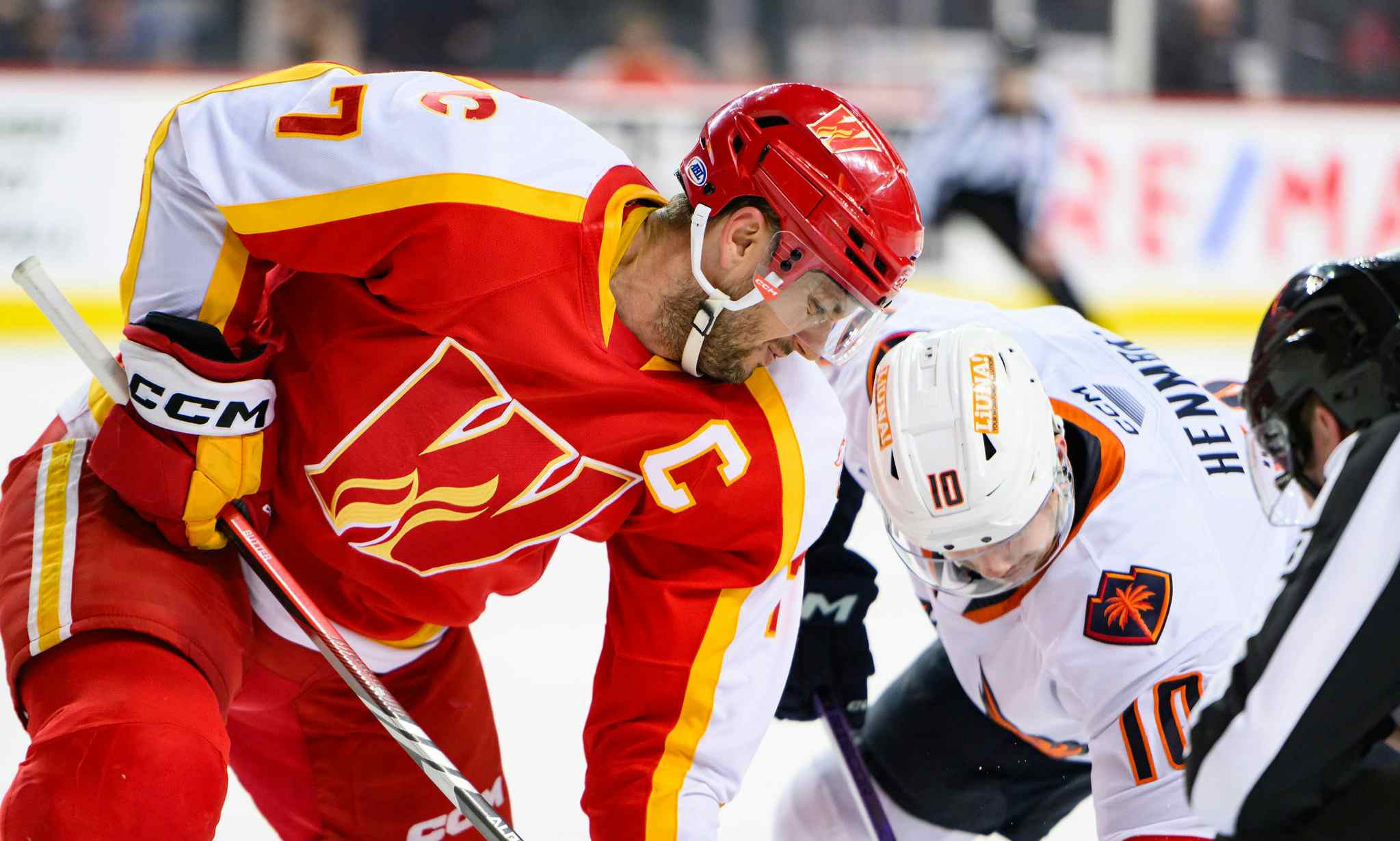Random Thoughts – What have we learned?
By Kent Wilson
8 years ago
Although there’s nearly a quarter of the season left to play, 2015-16 is more or less over for the Calgary Flames. As the club plays out the stretch it’s a good time reflect on what information fans and management can take from the big step back this year. What were the lessons learned and what is still unclear heading into the offseason?
What We Learned
Gaudreau and Brodie are elite
It’s not all bad news this year. The team as a whole regressed relative to their turn as Cinderella last year, but both T.J. Brodie and Johnny Gaudreau actually improved.
Brodie’s absence at the start of the year was keenly felt. Though the 25-year-old blueliner was previously considered a solid complement to Mark Giordano at best, it’s become clear this season that he is nobody’s sidekick. Not only is Brodie on pace to score a career high 53 points (despite missing 11 games), but he leads the team in average ice time at 25:50 per night (eighth most in the NHL).
Brodie entered the class of elite defenders this year. He is poised to supplant Giordano as the club’s best blueliner (player?) – if he hasn’t done so already.
As for Gaudreau, his incredible upward trend continued unabated this year. He went from a contributor to the club’s most potent forward trio in 2014-15 to by far the most dangerous Flame in 2015-16. The next best offensive forward on the club, Sean Monahan, trails Gaudreau by 17 points.
Gaudreau is currently sixth in the NHL in scoring – tied with Sidney Crosby and four spots ahead of Alexander Ovechkin. And that’s despite playing on the 29th ranked team with the 29th ranked PP. If the Flames had stronger goaltending or a better supporting cast, Gaudreau may not only be challenging for the scoring title, but for the Hart Trophy as well.
That’s quite the sophomore season. People have gone from asking if Gaudreau is big enough for the NHL to wondering just how good he’ll get.
Bennett is trending ahead of Monahan
More good news – although he likely won’t be in the running for the Calder Trophy this year, Sam Bennett is already looking like he’ll be a better player than Sean Monahan. Here’s a comparison of the two players across scoring, shot suppression and shot generation categories, via Own the Puck:

As you can see, Monahan is the better goal scorer… and Bennett is the better everything else. This compares Monahan’s three-year career thus far to Bennett’s 19-year-old rookie season, so we aren’t even comparing apples to apples (i.e.; this comparison should technically flatter Monahan).
Bennett is young enough that we can expect significant growth over the next few seasons, but even if he runs in place he’s already an above average NHLer.
Flames still don’t have a truly elite centre
And now some of the bad news. While the Flames have very good centre depth with the likes of Monahan, Bennett and Mikael Backlund, the team is still searching for a legit first line option. Backlund is a highly capable possession/two-way player, but he doesn’t score enough to warrant top line minutes. Monahan is the opposite: he scores well, but bleeds shots and goals against (as you can tell from the above chart). Bennett might become the Flames’ Toews or Kopitar or Bergeron, but for now he’s “just” a really good second line forward (we don’t even know if he’s a NHL caliber pivot yet because he has spent the bulk of his time on the wing this year).
I bring this up because almost every club that has risen out of the ashes to become a contender in recent memory has had a marquee centerman on the roster. If you’re wondering, here’s what their HERO charts tend to look like:

So maybe Bennett develops enough to look like this in a year or two. Maybe the org will draft a guy like this in June (*cough Mathews cough*)?
The club’s depth is bad
Okay, so this isn’t much of revelation, but it’s worth recognizing as we move into the offseason. The Flames are currently a very top-heavy club with a handful of legit stars (Giordano, Gaudreau, Brodie), a few other outstanding (and developing) guys (Hamilton, Monahan, Bennett) and then a small cadre of above average support players (Backlund, Frolik).
It falls off a cliff fairly quickly after that. While I have some time for role players like Micheal Ferland and Josh Jooris, the club tends to get badly, badly outplayed when the rest of the roster is on the ice.
Dennis Wideman, Ladislav Smid, Deryk Engelland, Brandon Bollig, Lance Bouma, Matt Stajan, Mason Raymond plus the departed Kris Russell, David Jones and Markus Granlund: all of these guys were underwater in terms of goals, possession and scoring chances this season.

All the blue dots on this graph are set to become more expensive within the next season or two (if they aren’t already). Obviously the end of the rotation is never going to be as good as the stars, but Treliving and company need to find a bottom end that is not only cheaper, but more effective as well.
The coaching might be a problem
Last year the Flames grossly outperformed their underlying numbers to become one of the most unlikely underdog stories in the post-lockout NHL. The unexpected success gave Bob Hartley the Jack Adams Trophy and suggested the team had somehow found a way to succeed despite poor possession numbers.
Or maybe not. Everything that propped up the 2014-15 Flames imploded this year. While the club managed to improve their possession from second worst to sixth worst in the league, it wasn’t enough to avoid the inevitable fall back down to earth.
Hartley’s block and collapse heavy defensive scheme crumbled in front of the league’s worst goaltending. Though much of that can be hung on the goaltenders themselves, it also makes a lie of the idea that the Flames were somehow denying high quality shots at a high rate.
The Flames also have horrendous special teams, despite a roster that boasts excellent-to-elite players at various positions. Even though we’re more than 75% through the year, the team still doesn’t seem to have a an effective zone entry strategy for the man advantage, while in contrast the opposition tends to cut through the Flames’ PK defensive structure with ease.
When I looked at the league’s “big gainers” in the summer, I found some striking similarities. For almost all of the teams that managed to go from basement dwellers to cup contenders, the improvement was often precipitated by a number of factors, not the least of which was a change in coaching.
Hartley will probably stick around this summer, but the clock will be ticking. If he can’t get the club to take a real step forward next year, it will be time to move on.
What We Didn’t Learn
No clarity in goal
The Flames started the year with three goalies and no idea who would be the team’s starter. And they are going to end the season with three goaltenders and no idea who will be the team’s starter.
Calgary boasted the worst puck stopping in the NHL this year. Jonas Hiller, previously dependable, fell off a cliff and is likely playing out the end of his career. Promising Joni Ortio faltered in the face of the club’s three-goalie rotation to start the year and then failed to stand out in the AHL when he was sent down. He’ll get a chance to rehabilitate his perceived value down the stretch, but there’s a real chance he won’t be retained in the offseason.
Karri Ramo was the only Flames goalie who provided a stretch of solid netminding this year (though he was also terrible for long stretches as well). His .909 SV%, while best on the Flames, is relatively poor though right in line with his career average of .906. Ramo is, at best, a steady NHL backup but no solution for the Flames moving forward.
The waters were further muddied by prospect Jon Gillies having his entire season wiped out by hip surgery. The organization was kinda, sorta waiting to see if Gillies could take the reins sooner rather than later, but his development has been unavoidably stalled by the setback this year. For now, he’s in a holding pattern.
Aside from re-signing Gaudreau and Monahan, Treliving’s main priority this summer will be finding the club some (at least) league average goaltending.
We don’t know what Monahan is away from Gaudreau
I remarked earlier this season that Monahan does really well with Gaudreau on his wing and not so well when the two are apart. So far this season, Monahan has spent 86% (or 780 minutes) of his even strength ice time with Johnny, meaning we still don’t have much of an idea what the pair look like apart.
This is important because the org is going to re-sign both players this summer. Getting an idea if (or how much) Monahan depends on Gaudreau would help determine each guy’s next contract. Luckily, the team still has some time to split the two up and see what happens.
Budget uncertainty
Aside from the club falling out of the playoff picture, the other disappointing outcome from this season was the Flames’ inability to dump a contract or two. The salary cap may actually fall next season, which represents a major obstacle for a team with so many big deals cluttering the bottom end of the roster.
Dennis Wideman (5.25M), Mason Raymond (3.15M), Ladislav Smid (3.5M), Deryk Engelland (2.917M) and Brandon Bollig (1.25M) represent almost $17M in cap space, even though they could all be easily replaced. Matt Stajan (3.125M) and Lance Bouma (2.2M) are also entering “overpaid for their impact” territory.
Gaudreau, Monahan and Giordano will (conservatively) increase in price by a combined $11M or so. The team also has to trade or sign two goalies and find someone to replace Hudler’s contributions on the wing.
So it’s a terrible mess. Treliving will likely get some breathing room by buying out Wideman, but he’ll need to do more. The good news is, a bunch of the bad deals go away after next season.
Scoring on the wing
Gaudreau is a human highlight reel and Michael Frolik has managed to live up to his reputation as a solid two-way forward, but there’s very little offense on the Flames wings after those two players. With Hudler gone, Calgary’s current depth chart includes: Joe Colborne, Micheal Ferland, Lance Bouma, Josh Jooris and Brandon Bollig. The high water mark amongst all of those guys is Colborne’s 28-point season from last year.
Bennett was a very good LWer with Backlund and Frolik to start, but the team has moved him back into the middle. On the farm, there’s no clear help on the horizon, although newly acquired Hunter Shinkaruk has promise. Nevertheless, it’s a pipe dream to assume he will step in and be a scoring option next year.
There might be some strong top six wing options on the UFA market this season, including Andrew Ladd, Kyle Okposo, Loui Eriksson and Milan Lucic, but the Flames’ complicated budget situation may mean they can’t afford any of them.
Luckily the top of the 2016 draft is littered with strong RWers, so the Flames might be able to solve their problem that way, albeit with a player who probably won’t be an instant fix (more of a long term solution).
Recent articles from Kent Wilson





